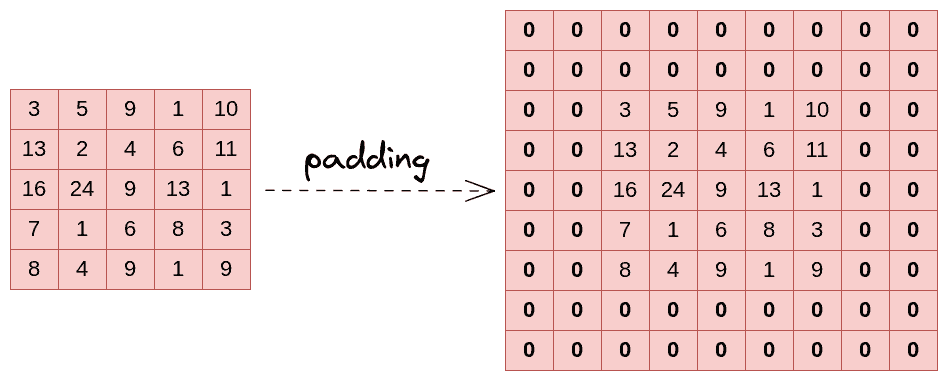1. Introduction
In this tutorial, we’ll walk through padding, a machine-learning technique widely used that processes the input data and improves the performance and accuracy of the model. In particular, we’ll introduce padding, explain its usage, highlight its importance, and give a brief example of how it works.
2. What Is Padding?
Padding is a technique employed that guarantees that the input data has the exact size and shape that the model anticipates after every convolutional operation at each stage of the deep learning model. So this is ensured by adding additional elements to the input data, such as zeros, to make it conform to the model’s specifications:

3. Different Types of Padding
Same Padding: This type of padding adds an equal number of elements (), typically zeros, to the top, bottom, left, and right sides of the input
image so that the output size is the same as the input size.
Valid Padding: This kind of padding computes the input matrix’s valid elements rather than adding new ones. Therefore, the output size is less than the input size. Valid padding denotes that there is no padding and that all of the proportions are accurate, resulting in a filter that completely covers the input picture.
Causal Padding: This type of padding is used in sequence-to-sequence models and time series forecasting and basically works with the one-dimensional convolutional layers. Causal padding adds elements to the start of the data, which also aids in forecasting the values of early time steps.
Note that the choice of padding can significantly impact the model’s performance and accuracy.
4. Why Is Padding Used?
Lastly, it aids in maintaining the spatial relationship and characteristics of the input data and can significantly impact the model’s overall performance.
5. Advantages and Disadvantages
On the other hand, padding increases the computational complexity of the model as more operations and processing steps are required. In addition, it adds extra elements, and thus the computational cost is increased. Lastly, in some cases, padding has seemed to contribute to overfitting.
6. Conclusion
In this tutorial, we walked through padding, a machine learning technique used in image processing, sequence-to-sequence models, time series forecasting, and speech processing that helps to improve model performance and simplify data processing. In particular, we introduced padding, highlighted it with a brief example, walked through the most common types of padding, and analyzed its importance along with its main benefits and limitations.